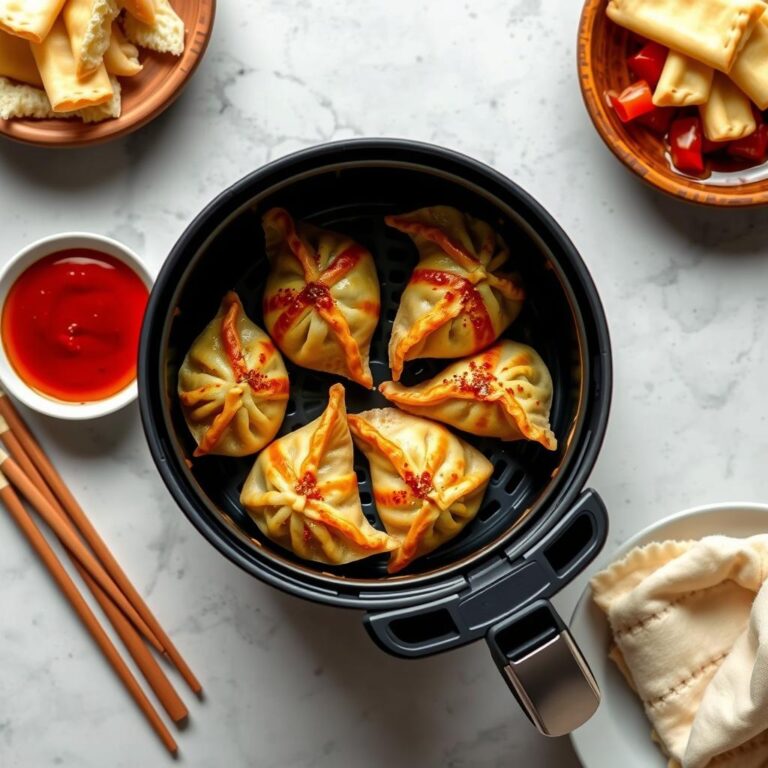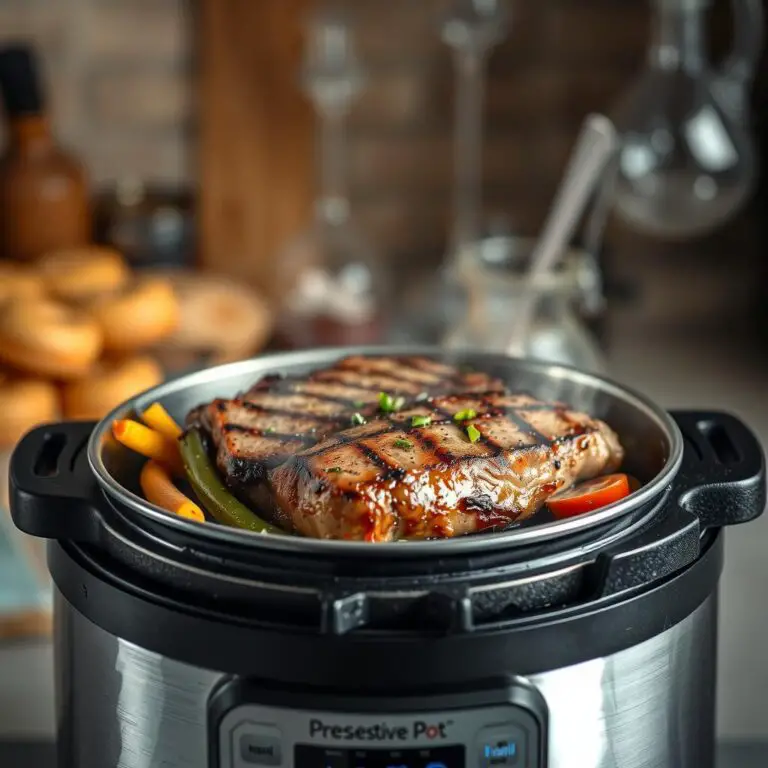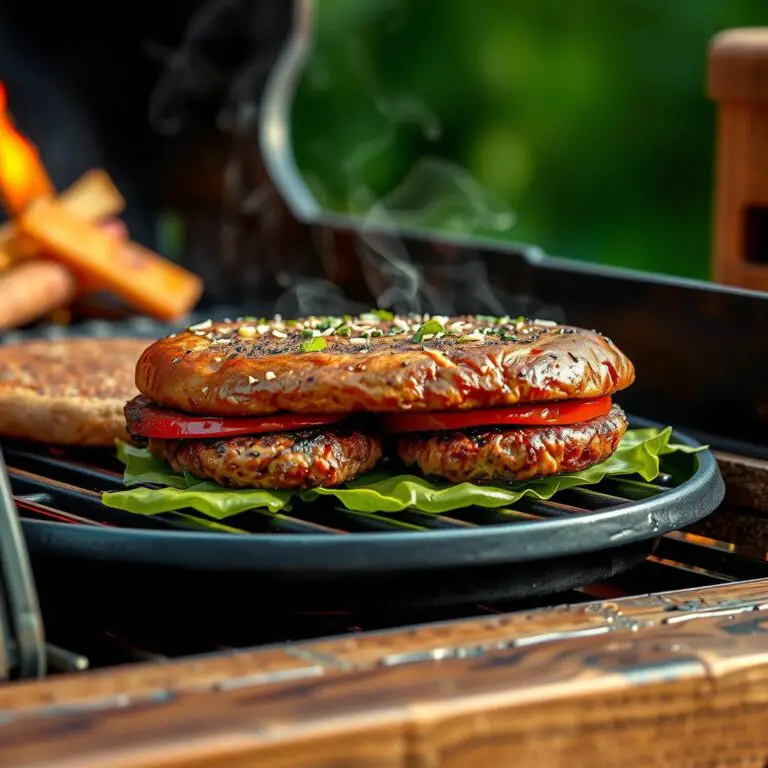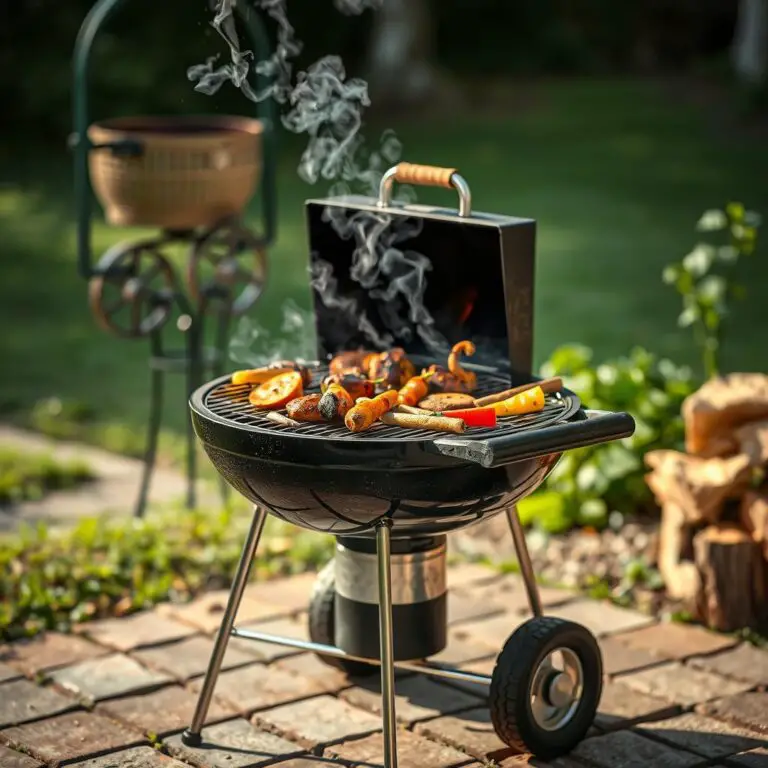Can you cook bulgur in a rice cooker?
You're staring at that bag of bulgur, right?
Wondering if you can ditch the stovetop dance and just toss it in your rice cooker?
I get it.
Life's too short for complicated cooking.
Let's cut to the chase: can you actually cook bulgur in a rice cooker?
The answer is a resounding yes.
And I'm about to break down exactly how to do it, making your life easier and your bulgur perfectly fluffy every single time.
Why Use a Rice Cooker for Bulgur?
Think about it.
Rice cookers are designed for hands-off cooking.
You dump in your grains, add water, press a button, and bam, perfectly cooked grains without the babysitting.
Bulgur, that nutty and nutritious whole wheat grain, deserves the same effortless treatment.
Using a rice cooker for bulgur offers several advantages:
- Convenience: Set it and forget it. No more watching the pot.
- Consistency: Rice cookers are designed to deliver consistent results.
- Easy Cleanup: One pot to clean. That’s it.
- Versatility: You can add seasonings, broth, or even vegetables directly into the rice cooker for a complete one-pot meal using your bulgur wheat.
Understanding Bulgur: The Basics
Before we dive into the how-to, let’s get clear on what bulgur actually is.
Bulgur is a whole wheat grain that has been parboiled, dried, and cracked.
It comes in different grinds, from fine to coarse.
The grind affects cooking time and texture.
Generally, finer grinds cook faster, while coarser grinds require a bit more water and time.
Bulgur is also a nutritional powerhouse, packed with fiber, protein, and essential minerals. It's a great alternative to rice or couscous. Plus, this whole wheat goodness is also low in fat and sodium.
Getting Started: What You'll Need To Perfectly Cook Bulgur
Ready to cook bulgur in your rice cooker? Gather these essentials:
- Bulgur: Choose your preferred grind.
- Water or Broth: The liquid for cooking. Broth adds extra flavor.
- Rice Cooker: Any standard rice cooker will work.
- Measuring Cup: For accurate ratios.
- Spoon or Spatula: For stirring.
Pro Tip: Using broth instead of water elevates the flavor profile immensely.
Step-by-Step: Cooking Bulgur in a Rice Cooker
Alright, let’s get cooking.
Follow these steps for perfect bulgur every time:
- Rinse the Bulgur: Place the bulgur in a fine-mesh sieve and rinse under cold water. This removes any excess starch and helps prevent clumping.
- Measure the Bulgur and Liquid: As a general rule, use a 1:2 ratio of bulgur to liquid. For example, 1 cup of bulgur requires 2 cups of water or broth. However, this can vary based on the bulgur grind. For coarse bulgur, consider slightly increasing the liquid.
- Combine in the Rice Cooker: Add the rinsed bulgur and liquid to the rice cooker pot.
- Season (Optional): Add any seasonings you like. Salt, pepper, herbs, and spices can enhance the flavor. A bay leaf adds a subtle depth.
- Cook: Close the lid and turn on the rice cooker. Use the "white rice" setting or a similar setting.
- Rest: Once the rice cooker switches to the "warm" setting, let the bulgur rest for 10-15 minutes. This allows it to fully absorb the liquid and become fluffy.
- Fluff and Serve: Open the lid and fluff the bulgur with a fork or spoon. Now it's ready to serve.
Troubleshooting: Common Issues and How to Fix Them
Even with a rice cooker, things can sometimes go awry. Here are some common issues and how to tackle them:
- Bulgur is Too Mushy: You likely used too much liquid. Next time, reduce the water or broth slightly.
- Bulgur is Too Crunchy: You didn't use enough liquid. Add a bit more water and cook for a few more minutes.
- Bulgur is Clumping: Rinsing the bulgur beforehand helps prevent this. Also, make sure to fluff it well after cooking.
- Burnt Bulgur: This usually happens if the rice cooker is set to a high-heat setting for too long. Adjust the cooking time or setting accordingly.
Pro Tip: If you are not getting the desired results with your bulgur, adjust the ratio of liquid to grain until you find the perfect combination.
Flavor Variations: Level Up Your Bulgur
Want to get creative with your bulgur? Here are some flavor variations to try:
- Mediterranean Bulgur: Add chopped tomatoes, cucumbers, olives, feta cheese, and a drizzle of olive oil.
- Lemon Herb Bulgur: Mix in lemon zest, fresh herbs like parsley and dill, and a squeeze of lemon juice.
- Spicy Bulgur: Add a pinch of red pepper flakes, cumin, and smoked paprika.
- Mushroom Bulgur: Sauté mushrooms with garlic and onions, then mix them into the cooked bulgur.
- Vegetable Bulgur: Add chopped carrots, peas, corn, or other vegetables to the rice cooker along with the bulgur and liquid.
Serving Suggestions: What to Eat with Bulgur
Bulgur is incredibly versatile. Here are some serving suggestions:
- Salads: Use bulgur as a base for salads, like tabbouleh.
- Side Dish: Serve bulgur alongside grilled chicken, fish, or vegetables.
- Stuffing: Use bulgur as a stuffing for bell peppers or zucchini.
- Breakfast: Cook bulgur with milk and fruit for a hearty breakfast.
- Bowls: Create a grain bowl with bulgur, roasted vegetables, and a protein of your choice.
Storing Leftover Bulgur
Cooked bulgur can be stored in the refrigerator for up to 3-4 days. Let it cool completely before transferring it to an airtight container. To reheat, simply microwave it or warm it on the stovetop with a little water or broth.
So, the next time you're pondering what to make for dinner, remember that you can cook bulgur in a rice cooker with ease, and enjoy a nutritious and delicious meal.
Can you cook bulgur in a rice cooker?
You're staring at that bag of bulgur, right?
Wondering if you can ditch the stovetop dance and just toss it in your rice cooker?
I get it.
Life's too short for complicated cooking.
Let's cut to the chase: can you actually cook bulgur in a rice cooker?
The answer is a resounding yes.
And I'm about to break down exactly how to do it, making your life easier and your bulgur perfectly fluffy every single time.
Why Use a Rice Cooker for Bulgur?
Think about it.
Rice cookers are designed for hands-off cooking.
You dump in your grains, add water, press a button, and bam, perfectly cooked grains without the babysitting.
Bulgur, that nutty and nutritious whole wheat grain, deserves the same effortless treatment.
Using a rice cooker for bulgur offers several advantages:
- Convenience: Set it and forget it. No more watching the pot.
- Consistency: Rice cookers are designed to deliver consistent results.
- Easy Cleanup: One pot to clean. That’s it.
- Versatility: You can add seasonings, broth, or even vegetables directly into the rice cooker for a complete one-pot meal using your bulgur wheat.
Understanding Bulgur: The Basics
Before we dive into the how-to, let’s get clear on what bulgur actually is.
Bulgur is a whole wheat grain that has been parboiled, dried, and cracked.
It comes in different grinds, from fine to coarse.
The grind affects cooking time and texture.
Generally, finer grinds cook faster, while coarser grinds require a bit more water and time.
Bulgur is also a nutritional powerhouse, packed with fiber, protein, and essential minerals. It's a great alternative to rice or couscous. Plus, this whole wheat goodness is also low in fat and sodium.
Getting Started: What You'll Need To Perfectly Cook Bulgur
Ready to cook bulgur in your rice cooker? Gather these essentials:
- Bulgur: Choose your preferred grind.
- Water or Broth: The liquid for cooking. Broth adds extra flavor.
- Rice Cooker: Any standard rice cooker will work.
- Measuring Cup: For accurate ratios.
- Spoon or Spatula: For stirring.
Pro Tip: Using broth instead of water elevates the flavor profile immensely.
Step-by-Step: Cooking Bulgur in a Rice Cooker
Alright, let’s get cooking.
Follow these steps for perfect bulgur every time:
- Rinse the Bulgur: Place the bulgur in a fine-mesh sieve and rinse under cold water. This removes any excess starch and helps prevent clumping.
- Measure the Bulgur and Liquid: As a general rule, use a 1:2 ratio of bulgur to liquid. For example, 1 cup of bulgur requires 2 cups of water or broth. However, this can vary based on the bulgur grind. For coarse bulgur, consider slightly increasing the liquid.
- Combine in the Rice Cooker: Add the rinsed bulgur and liquid to the rice cooker pot.
- Season (Optional): Add any seasonings you like. Salt, pepper, herbs, and spices can enhance the flavor. A bay leaf adds a subtle depth.
- Cook: Close the lid and turn on the rice cooker. Use the "white rice" setting or a similar setting.
- Rest: Once the rice cooker switches to the "warm" setting, let the bulgur rest for 10-15 minutes. This allows it to fully absorb the liquid and become fluffy.
- Fluff and Serve: Open the lid and fluff the bulgur with a fork or spoon. Now it's ready to serve.
Troubleshooting: Common Issues and How to Fix Them
Even with a rice cooker, things can sometimes go awry. Here are some common issues and how to tackle them:
- Bulgur is Too Mushy: You likely used too much liquid. Next time, reduce the water or broth slightly.
- Bulgur is Too Crunchy: You didn't use enough liquid. Add a bit more water and cook for a few more minutes.
- Bulgur is Clumping: Rinsing the bulgur beforehand helps prevent this. Also, make sure to fluff it well after cooking.
- Burnt Bulgur: This usually happens if the rice cooker is set to a high-heat setting for too long. Adjust the cooking time or setting accordingly.
Pro Tip: If you are not getting the desired results with your bulgur, adjust the ratio of liquid to grain until you find the perfect combination.
Flavor Variations: Level Up Your Bulgur
Want to get creative with your bulgur? Here are some flavor variations to try:
- Mediterranean Bulgur: Add chopped tomatoes, cucumbers, olives, feta cheese, and a drizzle of olive oil.
- Lemon Herb Bulgur: Mix in lemon zest, fresh herbs like parsley and dill, and a squeeze of lemon juice.
- Spicy Bulgur: Add a pinch of red pepper flakes, cumin, and smoked paprika.
- Mushroom Bulgur: Sauté mushrooms with garlic and onions, then mix them into the cooked bulgur.
- Vegetable Bulgur: Add chopped carrots, peas, corn, or other vegetables to the rice cooker along with the bulgur and liquid.
Serving Suggestions: What to Eat with Bulgur
Bulgur is incredibly versatile. Here are some serving suggestions:
- Salads: Use bulgur as a base for salads, like tabbouleh.
- Side Dish: Serve bulgur alongside grilled chicken, fish, or vegetables.
- Stuffing: Use bulgur as a stuffing for bell peppers or zucchini.
- Breakfast: Cook bulgur with milk and fruit for a hearty breakfast.
- Bowls: Create a grain bowl with bulgur, roasted vegetables, and a protein of your choice.
Storing Leftover Bulgur
Cooked bulgur can be stored in the refrigerator for up to 3-4 days. Let it cool completely before transferring it to an airtight container. To reheat, simply microwave it or warm it on the stovetop with a little water or broth.
So, the next time you're pondering what to make for dinner, remember that you can cook bulgur in a rice cooker with ease, and enjoy a nutritious and delicious meal.
Exploring Bulgur Grinds: Fine vs. Coarse in your Rice Cooker
Okay, so we've established that you can cook bulgur in a rice cooker, but let's dive deeper into the nuances, especially when it comes to different bulgur grinds.
Think of it like coffee – a fine grind needs different treatment than a coarse one.
Fine bulgur cooks faster, and absorbs water more quickly.
Coarse bulgur, on the other hand, is a bit more stubborn.
It needs more water and a longer cooking time to reach that perfect fluffy texture when you're using your rice cooker.
So, how do you adjust when you cook bulgur in a rice cooker with different grinds?
- Fine Bulgur: Stick to the 1:2 ratio (bulgur to liquid). Keep an eye on it towards the end of the cooking cycle, as it might finish sooner. You can also try the "quick cook" setting on your rice cooker.
- Medium Bulgur: The standard 1:2 ratio usually works well. Just follow the basic cooking instructions.
- Coarse Bulgur: Increase the liquid slightly, maybe to a 1:2.25 or even 1:2.5 ratio. This ensures the grains fully hydrate and become tender. You might also need to let it sit on the "warm" setting for a longer period.
Boosting Nutrition: Cooking Bulgur in a Rice Cooker for Health
Let's be real, we're all trying to sneak in some extra health benefits where we can.
Cooking bulgur in a rice cooker is already a win because you're avoiding excess fats or oils.
But, you can level up the nutritional value even further with a few simple tweaks.
- Broth Over Water: Using bone broth or vegetable broth adds extra vitamins, minerals, and even protein to your bulgur. Plus, it makes it taste amazing.
- Add Veggies: Toss in some chopped veggies like broccoli, carrots, or spinach right into the rice cooker. They'll steam along with the bulgur, making it a complete and nutritious one-pot meal.
- Seasonings with Benefits: Turmeric, ginger, and garlic not only add flavor but also boast anti-inflammatory properties. Mix them in for a health boost.
- Don't Forget the Healthy Fats: Drizzle a little olive oil or add some chopped nuts or seeds after cooking for healthy fats and extra flavor.
Rice Cooker Bulgur Recipes: Beyond Plain Grain
Who says cooking bulgur in a rice cooker has to be boring?
Let's ditch the bland and explore some exciting recipes that you can easily whip up.
- Mediterranean Rice Cooker Bulgur: Add sun-dried tomatoes, Kalamata olives, feta cheese, and a sprinkle of oregano to the rice cooker along with the bulgur and broth.
- Lemon Herb Rice Cooker Bulgur: Mix in lemon zest, fresh parsley, dill, and a squeeze of lemon juice after cooking. This is super refreshing!
- Spicy Southwestern Rice Cooker Bulgur: Add black beans, corn, diced tomatoes, chili powder, and cumin to the rice cooker for a flavorful and filling dish.
- Mushroom and Spinach Rice Cooker Bulgur: Sauté mushrooms and spinach with garlic, then stir them into the cooked bulgur. A hearty and earthy option.
- Breakfast Bulgur Porridge: Cook bulgur with milk (dairy or non-dairy), cinnamon, and a touch of maple syrup. Top with your favorite fruits and nuts for a healthy and delicious breakfast.
Rice Cooker Maintenance: Keeping it Clean for Perfect Bulgur
Okay, nobody likes cleaning, but keeping your rice cooker in tip-top shape is crucial for consistently great bulgur.
Plus, a clean rice cooker lasts longer and prevents weird flavors from transferring to your food.
Here's the lowdown:
- After Each Use: Always unplug the rice cooker and let it cool completely. Wash the inner pot and any removable parts with warm, soapy water.
- Prevent Sticking: A light coating of cooking spray or oil in the pot before cooking can help prevent bulgur from sticking.
- Tackle Stubborn Residue: If you have burnt or stuck-on bits, soak the pot in warm, soapy water for a while before scrubbing. Avoid using abrasive scrubbers, as they can damage the non-stick coating.
- Clean the Exterior: Wipe down the outside of the rice cooker with a damp cloth to keep it looking fresh.
- Address Odors: If your rice cooker is holding onto odors, try cooking a pot of plain water with a squeeze of lemon juice.
Can You Cook Bulgur in a Rice Cooker: Advanced Tips and Tricks
Want to really master the art of cooking bulgur in a rice cooker?
Here are a few insider tips to take your game to the next level:
- Toast the Bulgur: Before adding the liquid, lightly toast the bulgur in the rice cooker (using the "warm" setting) for a few minutes. This enhances its nutty flavor.
- Add Aromatics: Throw in a clove of garlic or a sprig of rosemary while cooking for added depth of flavor. Just remember to remove them before serving.
- Use Coconut Milk: For a richer and creamier bulgur, try using coconut milk instead of water or broth.
- Experiment with Textures: Adjust the amount of liquid to achieve your desired texture. Less liquid will result in a drier, more distinct grain, while more liquid will create a softer, more porridge-like consistency.
- Consider Different Rice Cooker Types: Fuzzy logic rice cookers can automatically adjust cooking time and temperature based on the grain, providing even more consistent results when cooking bulgur.
FAQ: Cooking Bulgur in a Rice Cooker
- Can I use the "brown rice" setting to cook bulgur? Yes, the "brown rice" setting can work well, especially for coarser grinds of bulgur, as it typically involves a longer cooking time. Just keep an eye on it to ensure it doesn't overcook.
- How do I know when the bulgur is done? The bulgur is done when all the liquid has been absorbed and the grains are tender and fluffy.
- Can I cook other grains in my rice cooker besides bulgur and rice? Absolutely! Rice cookers are great for cooking quinoa, farro, and other grains. You might need to adjust the liquid ratio and cooking time based on the specific grain.
- My rice cooker doesn't have a "warm" setting. What should I do? Once the cooking cycle is complete, simply let the bulgur sit in the rice cooker with the lid on for 10-15 minutes to allow it to fully absorb the remaining moisture.
- Can I add beans or lentils to the rice cooker with the bulgur? Yes, but you might need to pre-soak the beans or lentils to ensure they cook evenly with the bulgur.
Conclusion
So, can you cook bulgur in a rice cooker? You absolutely can! And hopefully, by now, you're armed with all the knowledge and tips you need to whip up perfectly cooked, delicious bulgur every single time.






